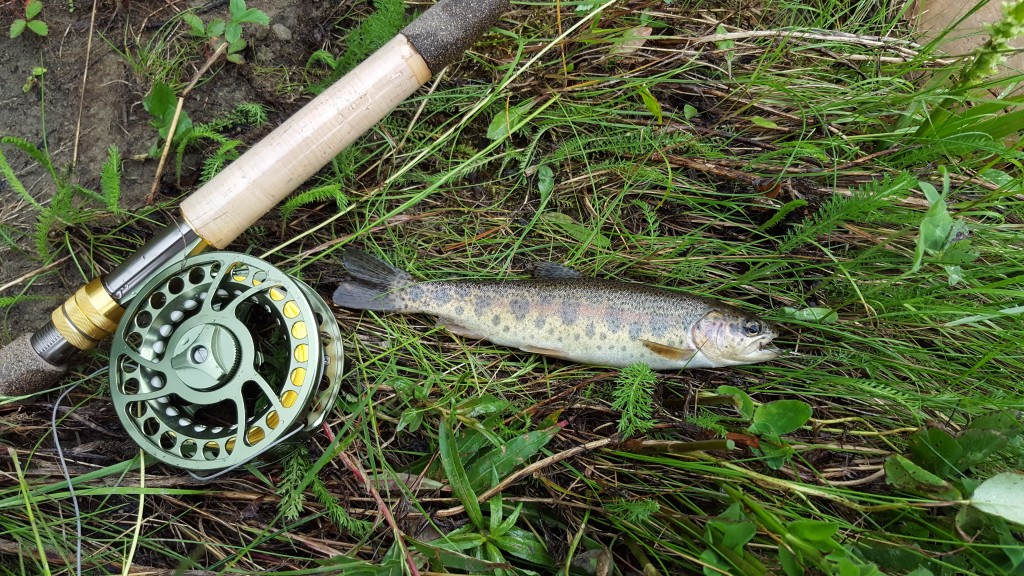Population Sampling
8 juillet 2016 9:36 Laisser vos pensées
Last week a new phase of my job began: Crossing inspections. Millar Western owns hundreds of kilometers of road and within those roads are thousands of culverts and bridges, most of which are nothing but cross drains for the ditches, but some cross over larger streams or small rivers. There are two main reasons they need to be inspected; the first reason is from a financial standpoint, essentially the company needs to know the condition of their culverts to avoid a costly problem such as a road washing out. The second reason is environmental, and it is to ensure that the culverts are allowing free passage of fish and that no erosion of sediments into the creek is happening. It is a major problem for fish trying to swim upstream if they are blocked by what is known as a “hung culvert”. Hanging culverts are when the outlet side of a culvert has eroded away to the point where the water level is lower than the culvert mouth which then hangs over the creek, creating a dead end for any fish attempting to swim upstream. This negatively affects fish populations as it prevents the fish from reaching their spawning grounds.
What can be done about it?
With all of the different forestry and oil and gas companies owning roads in the forest, there are tens of thousands of culverts out there, many of which are impacting fish migration. Bridges are great because it allows the free flow of the natural creek channel, but unfortunately installing a bridge over every little stream would be financially devastating to any company that tried it. On the positive side, there seems to be a big push in industry for the replacement of these failing culverts with open-bottomed culverts. This crosses the stream with an archway and also allows for the natural stream channel to continue unhindered, eliminating the risk of a hung culvert, all without the cost of a bridge. The downside to them is that they cannot be used just anywhere. If the ground material is too silty, such as is the case in much of our work area, the culvert will then slowly press into the ground because of its reduced surface area.
My role in all of this is to drive (or atv, or walk, or sometimes even fly) around to all culverts and bridges in a specific watershed and inspect their quality with extra attention given to those with fish habitat. Once all crossings in a watershed are inspected, we can develop a management plan to deal with those that are currently an issue, or those that will be an issue in the near future. With the new provincial regulations, each watershed must be inspected every few years to ensure that new problems are caught as soon as possible.
My favorite part of these inspections is scouting out all the fish bearing streams. Last week I looked over the side of a bridge to see a 12-13 inch trout picking bugs off the surface as they came by its pool. Unfortunately when I came back two days later with a fly rod it was nowhere to be found. I did however find some little juvenile rainbow trout in a neighboring creek! There is no better feeling than pulling in a few fish over your lunch break at work. Well, some call it fishing at lunch, but at work I call it “population sampling.”


